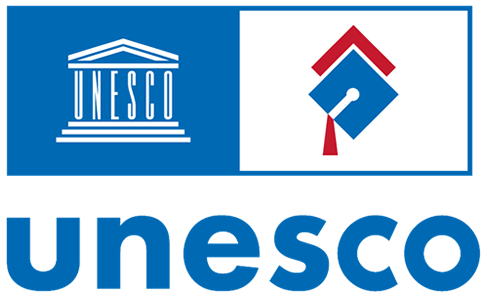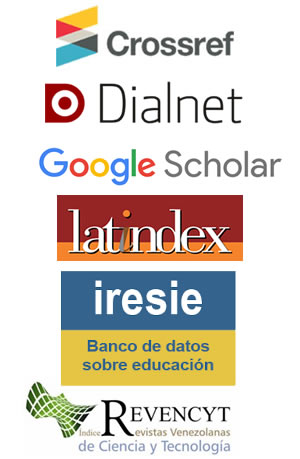Acceso universal a la educación superior: Tendencias, barreras y factores impulsores
Resumen
Este artículo desarrolla un análisis global sobre el acceso a la educación superior y cómo este ha evolucionado entre el 2000 y el 2018, así como sus factores impulsores y las barreras para su consecución. También aborda la importancia de la educación superior para el desarrollo humano, social y económico, así como desde la perspectiva de los derechos humanos. Este estudio utiliza dos aproximaciones metodológicas. En primer lugar, un análisis cuantitativo de los principales indicadores utilizados en el monitoreo de la educación superior, desagregados por región, género y grupo de ingresos. En segundo lugar, una revisión completa de la literatura en relación con los factores impulsores y las barreras para el acceso a la educación superior. Este acceso ha aumentado a nivel global; sin embargo, marcadas diferencias se pueden apreciar a nivel regional, de género y de nivel de ingresos. El desarrollo económico de las naciones y el auge de las aspiraciones de clase media, el crecimiento de las instituciones privadas y la expansión de las instituciones de educación a distancia han sido los principales contribuyentes a este aumento del acceso. La pobreza, las crisis, las prácticas institucionales de admisión adversas y la ubicación de las instituciones suponen un desafío continuado para el acceso universal. Una combinación de políticas públicas y acciones puede ser adoptada por los gobiernos nacionales y las instituciones de educación superior para aumentar aún más el acceso, teniendo particularmente en cuenta a quienes se están quedando atrás.
Citas
REFERENCES
Altbach, P. G., Reisberg, L., & Rumbley, L. E. (2009). Trends in Global Higher Education: Tracking an Academic Revolution. UNESCO.
British Council. (2012). The shape of things to come: Higher education global trends and emerging opportunities to 2020. British Council.
Briscoe, F. M., & Oliver, M. D. (2006). Access to higher education: A conflict between landed interests and democratic ideals. Education and Urban Society, 38(2), 204-227.
Curaj. A., Matei, L., Pricopie, R., Salmi, J., & Scott, P. (2015). The European higher education area: between critical reflections and future policies. Springer.
du Plessis, P., & Mestry, R. (2019). Teachers for rural schools - a challenge for South Africa. South African Journal of Education, 39(Suppl. 1), s1-s9. https://dx.doi.org/10.15700/saje.v39ns1a1774
ED Glossary. (2014). Access. The Glossary of Education Reform. Great Schools Partnership. https://www.edglossary.org/
Forsyth, A., & Furlong, A. (2000). Socioeconomic Disadvantage and Access to Higher Education. The Policy Press.
Gandhi, D. (2018). Figures of the Week: Higher Education Enrollment Grows in Sub-Saharan Africa Along with Disparities in Enrollment by Income. Brookings. https://brook.gs/2RPiDFN
Gray, S. S. (2013). Framing “Risk” Students: Struggles at the Boundaries of Access to Higher Education. Children and Youth Services Review, 35, 1245-1251.
Hout, M. (2006). Maximally Maintained Inequality and Essentially Maintained Inequality. Sociological Theory and Methods, Volume 21, Issue 2 Pages 237-252. https://doi.org/10.11218/ojjams.21.237
International Labour Organization. (2015). Child Labour and Education – Progress, challenges, and future directions. ILO. https://www.ilo.org/ipecinfo/product/download.do?type=document&id=26435
Kinser, K., & Lane, J. E. (2012). Foreign outposts of colleges and universities. International Higher Education, 66, 2–3.
Levy, D. C. (2013). The ‘decline’ of private higher education. Higher Education Policy, 26(1), 25–42.
Lucas, S.R. (2017). An Archaeology of Effectively Maintained Inequality Theory. American Behavioral Scientist, Vol. 61(1) 3-7. https://doi.org/10.1177/0002764216682989
Lucas, S.R., & Byrne, D. (2017). Effectively Maintained Inequality in Education: An Introduction. American Behavioral Scientist, Vol. 61(1), 8-29. https://doi.org/10.1177/0002764216682992
Marginson, S. (2016). The worldwide trend to high participation higher education: Dynamics of social stratification in inclusive systems. Higher Education, 72, 413–434.
McCowan, T. (2016). Equity of access to higher education. Health and Education Advice and Resource Team. Retrieved from: https://bit.ly/3y1d7Im
Milton, S., & Barakat, S. (2016). Higher education as the catalyst of recovery in conflict-affected societies. Globalisation, Societies and Education, 14(3), 403–421. https://doi.org/10.1080/14767724.2015.1127749
Mittal, P., Radkar, A., Kurup, A., Kharola, A., & Patwardhan, B. (2020). Measuring Access, Quality and Relevance in Higher Education. Economic & Political Weekly. 55 (24).
Mullen, F. (2010). Barriers to widening access to higher education. Scottish Parliament Information Centre.
O’Brien, M. L. (2020). Disruption and decline: The gendered consequences of civil war and political transition for education in Tajikistan. Post-Soviet Affairs, 36(4), 323–345. https://doi.org/10.1080/1060586X.2019.1701880
Oketch, M. (2016). Financing higher education in sub-Saharan Africa: Some reflections and implications for sustainable development. Higher Education, 72, 525–539.
Raftery, A. E., & Hout, M. (1993). Maximally maintained inequality: Expansion, reform, and opportunity in Irish education, 1921-75. Sociology of education, 41-62. https://www.jstor.org/stable/2112784
ReliefWeb. (2021). Education in Emergencies. ReliefWeb. Retrieved from: https://bit.ly/2TcdNnx
Sabzalieva, E. (2015). University Admissions Reform in Tajikistan. Emma Sabzalieva. https://bit.ly/3mWivX1
Spiel, C., Schwartzman, S., Busemeyer, M., Cloete, N., Drori, G., Lassnigg, L., Schober, B., Schweisfurth, M., & Verma, S. (2018). The contribution of education to social progress. In International Panel on Social Progress, (Ed.) Rethinking Society for the 21st Century: Report of the International Panel for Social Progress. Cambridge: Cambridge University Press.
Trow, M. (1970). Reflections on the Transition from Mass to Elite, Higher Education, Daedalus 99.1 (Winter 1970). 1-42
Trow, M. (1973). Problems in the Transition from Elite to Mass Higher Education. Berkeley: Carnegie Commission on Higher Education
Trow, M. (1974). Problems in the Transition from Elite to Mass Higher Education, General Report on the Conference on Future Structures of Post-Secondary Education, Paris: Organisation for Economic Cooperation and Development. 55-101
Trow, M. (1976). Elite Higher Education: An Endangered Species? Minerva 14.3 (Autumn 1976), 355-376
Trow, M. (2000). From Mass Higher Education to Universal Access: The American Advantage. Minerva 37 (Spring 2000). 1-26
Trow, M. (2006). Reflections on the Transition from Elite to Mass to Universal Access: Forms and Phases of Higher Education in Modern Societies since WWII. In Forrest, J. F. and Altbach, P. International Handbook on Higher Education. (pp. 243-280). Springer
UNESCO Institute for Statistics. (s.d.) Gross enrolment ratio for tertiary education, by sex. Definition. UIS-UNESCO. Retrieved from: http://uis.unesco.org/en/glossary-term/gross-enrolment-ratio-tertiary-education-sex
UNESCO International Institute for Higher Education in Latin America and the Caribbean. (2008). Higher education in Latin America and the Caribbean. UNESCO-IESALC.
UNESCO International Institute for Higher Education in Latin America and the Caribbean. (2020). Towards Universal Access to Higher Education: International Trends. UNESCO-IESALC.
United Nations Educational, Scientific and Cultural Organization. (2005). World Declaration on Higher Education for the Twenty-first Century: Vision and Action and Framework for Priority Action for Change and Development in Higher Education Adopted by the World Conference on Higher Education in the Twenty-First Century: Vision and Action. UNESCO.
United Nations Educational, Scientific and Cultural Organization. (2007). The Right to Education for All: Ten Reasons Why the Convention Against Discrimination in Education is Highly Significant in Today's World. UNESCO.
United Nations Educational, Scientific and Cultural Organization. (2010a). The Central role of education in the Millennium Development Goals. UNESCO.
United Nations Educational, Scientific and Cultural Organization. (2010b). Trends in Tertiary Education in Sub-Saharan Africa. UIS Fact Sheet, December 2010, No. 10, 1- 7.
United Nations Educational, Scientific and Cultural Organization. (2010c). How does violent conflict impact on individual educational outcomes? The evidence so far. UNESCO.
United Nations Educational, Scientific and Cultural Organization. (2016). Incheon Declaration and Framework for Action for the implementation of Sustainable Development Goal 4. UNESCO. https://unesdoc.unesco.org/ark:/48223/pf0000245656_eng
United Nations Educational, Scientific and Cultural Organization. (2017). Six ways to ensure higher education leaves no one behind. Policy Paper 30. UNESCO. https://unesdoc.unesco.org/ark:/48223/pf0000247862
United Nations Educational, Scientific and Cultural Organization. (2018). Global Education Monitoring Report Gender Review: Meeting our commitments to gender equality in education. UNESCO.
United Nations Educational, Scientific and Cultural Organization. (2019a). Futures of Education: Learning to Become. UNESCO.
United Nations Educational, Scientific and Cultural Organization. (2019b). New methodology shows that 258 million children, adolescents and youth are out of school. UNESCO Fact Sheet no. 56. September 2019
United Nations Educational, Scientific and Cultural Organization. (2020a). Basic Texts. UNESCO.
United Nations Educational, Scientific and Cultural Organization. (2020b). Education Indicators Technical Guidelines. UNESCO.
United Nations Department of Economic and Social Affairs. (2021). Goals. UN DESA. https://bit.ly/3y1d1jY
United Nations Sustainable Development Group. (n.d.). Human Rights-Based Approach. UNSDG. https://bit.ly/3y1JRRP
United Nations Sustainable Development Group. (2003). The Human Rights Based Approach to Development Cooperation Towards a Common Understanding Among UN Agencies. UNSDG. https://bit.ly/3tJrf6H
United Nations Sustainable Development Group. (2019). Cooperation Framework Guidance. UNSDG. https://bit.ly/3MWYSss
Wodon, Q., Male, C., Nayihouba, A., Onagoruwa, A., Savadogo, A., Yedan, A., Edmeades, J., Kes, A., John, N., Murithi, L., Steinhaus, M., & Petroni, S. (2017). Economic impacts of child marriage: Global synthesis report. The World Bank and International Center for Research on Women.
World Bank. (September 2020). School Enrollment, Tertiary (% gross). https://bit.ly/2MXkmdS
Derechos de autor 2022 Revista Educación Superior y Sociedad (ESS)

Esta obra está bajo licencia internacional Creative Commons Reconocimiento-NoComercial 4.0.
Los derechos de autor permiten la protección del material original, y frena la utilización del trabajo ajeno sin permiso. UNESCO IESALC se adhiere a las licencias Creative Commons en la publicación de acceso abierto de la ESS. En concreto, los textos publicados en esta revista están sujetos a una licencia Creative Commons Reconocimiento-NoComercial 4.0 Internacional (CC BY-NC 4.0): Pueden ser copiados, distribuidos y difundidos siempre que se cite al autor, a la revista (Revista Educación Superior y Sociedad) y a la institución que los publica. No se permite el uso comercial. La licencia completa puede consultarse en https://creativecommons.org/licenses/by-nc/4.0/ La ESS requiere que los autores acepten el Copyright Notice como parte del proceso de envío. Los autores conservan todos los derechos.
 Reconocimiento – NoComercial (CC BY-NC 4.0)
Reconocimiento – NoComercial (CC BY-NC 4.0)
Esta revista no aplica ningún tipo de cargo a los autores por la presentación o procesado de los artículos. Los autores de las colaboraciones recibirán acuse de recibo de que el trabajo ha llegado al Equipo Editorial de la Revista.








-literales-100x311.png)
